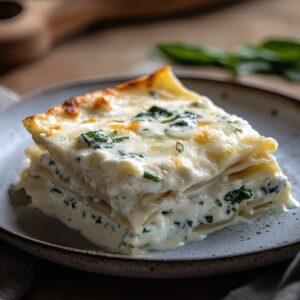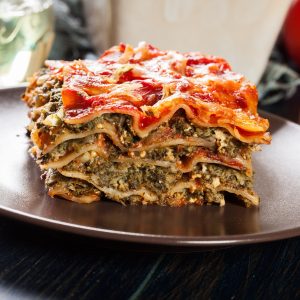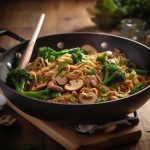A Delicious Stir Fry with Hong Kong-Style Noodles
When looking for a quick and easy meal on a weeknight, we often turn to a stir-fry with Chinese noodles like this one. You can use the ingredients listed below or substitute foods you have on hand. If you live near an Asian food market or have a supermarket carrying exotic vegetables, try them. Let me know your results below.
Chow Mein Noodles
Chow mein noodles, a versatile staple in Chinese cuisine, are celebrated for their ability to pair well with a variety of ingredients, adding a delightful twist to any dish. The term’ chow mein’ translates to ‘stir-fried noodles,’ and this dish typically consists of noodles, vegetables, and often meat or tofu, all stir-fried with a savory sauce.
Chow mein noodles come in two primary varieties: crispy and soft. Crispy chow mein involves frying the noodles until they become crunchy, then topping them with a thick sauce and stir-fried mixture. Soft chow mein, on the other hand, features noodles that are boiled or steamed before being stir-fried with the other ingredients, resulting in a tender and chewy texture. Understanding these differences can help you choose the right type of noodles for your dish.
The noodles used in chow mein are usually made from wheat flour and eggs, which give them a distinctive yellow hue and firm texture. They can be found in various shapes and sizes, though they are typically long and thin. These noodles are a key ingredient in the dish; absorbing the flavors of the sauces and other ingredients, they are cooked with.
How Are They Different From Hong Kong Noodles?
Preparation and Texture
Hong Kong-style Chow Mein: This variant specifically refers to the crispy version, where the noodles are fried until golden and crispy. The toppings, including the stir-fried mixture, are poured over the noodles, softening them slightly while retaining some crunch.
Hong Kong Pan-Fried Noodles: These are boiled or par-cooked noodles that are then pan-fried until they form a crispy layer on the bottom while the top remains tender. They are served with a saucy topping of vegetables, meats, or seafood.
Ingredients
Hong Kong noodles are also made from wheat flour and eggs. The toppings can be similar to chow mein, including a mix of vegetables and proteins. However, Hong Kong-style preparations often emphasize a more refined presentation and balance of textures.
Sauce
The sauces used can be similar to those in chow mein but may include additional elements for a more complex flavor. Sauces for Hong Kong noodles are often more sophisticated, reflecting the Cantonese culinary tradition’s emphasis on subtle and balanced flavors.
Key Differences
Texture: Chow mein can be either crispy or soft, while Hong Kong-style noodles are predominantly known for their crispy preparation, either fully crispy or pan-fried with a crispy base.
Preparation Method: Hong Kong noodles often involve more intricate cooking techniques like pan-frying to achieve the desired texture, whereas chow mein’s method is more straightforward with either stir-frying or deep-frying.
Culinary Tradition: Chow mein is a broader term encompassing various regional adaptations, while Hong Kong noodles are specifically tied to Cantonese cuisine and its emphasis on texture and presentation.
Classic Recipe
A classic chow mein recipe often includes cabbage, carrots, onions, and bell peppers. Proteins such as chicken, beef, shrimp, or tofu are commonly added, making the dish highly customizable to suit different tastes and dietary preferences. The stir-frying process is quick, helping to retain the freshness and crunch of the vegetables.
The sauce is a crucial component, typically made from soy sauce, oyster sauce, sesame oil, and sometimes hoisin sauce or cornstarch to thicken it. This blend of sauces imparts a rich, savory taste with a hint of sweetness, perfectly complementing the other ingredients.
Chow mein noodles have transcended their Chinese origins, becoming a beloved dish in many parts of the world. They are a fixture in Chinese-American cuisine and have been adapted into various regional versions, reflecting local tastes and ingredients. Whether enjoyed as a quick street food snack or a hearty homemade meal, chow mein noodles remain a delicious and enduring favorite.
Chinese Noodles Stir Fry Recipe
Ingredients
- 4 tablespoons dry sherry wine
- ½ cup water
- 2 tablespoons cornstarch
- 4 tablespoons soy sauce
- 2 tablespoons vegetable oil
- ½ pound fresh Shiitake mushrooms de-stemed and sliced
- 4 cloves garlic minced
- 2 inch piece ginger minced
- 12 ounces broccoli rabe chopped
- 12 ounces fresh Chow Mein Noodles Hong Kong-Style Noodles
- 5 tablespoons peanuts
- 1 bunch chives
- salt and pepper to taste
Instructions
Prep the Ingredients
- Peel & mince the garlic and ginger.
- Roughly chop the broccoli rabe and peanuts.
- De-stem the mushrooms and thinly slice the caps (Discard the stems or save them for stock)
- Slice the chives on a bias into ½ inch pieces
Make the Sauce
- Combine the sherry and water with the corn starch in a small bowl using a small whisk (fork will do too)
- Add half the soy sauce, taste and adjust flavor by adding more soy sauce if needed.
Make the Stir Fry
- Heat a stir fry pan or large nonstick fry pan over medium hot. Add 1 tablespoon oil to the pan and when hot, add the mushrooms. Cook for 5 to 7 minutes until browned and start to soften.
- Add the garlic and ginger and cook for 1 minute.
- Add the broccoli rabe and continue stir frying for 4 to 6 minutes. Transfer the stir fried veggies to a plate and reserve.
- In the same pan, add the other tablespoon of oil and spread it around the bottom of the pan.
- Separate the noodles with your hands and spread them out in the pan to make a single layer. Cook the noodles using a pair of kitchen tongs to turn them over, keep them separated and coat them with the oil. Cook for 8 to 10 minutes until crispy and browned.
- Add the sauce you just made to the noodles and carefully combine the noodles with the sauce with the tongs.
- Add the reserved vegetables to the pan and then half the peanuts and chives. Again, using your kitchen tongs, mix everything together until it is well combined and heated through.
- Remove from heat, taste and adjust seasonings with salt and pepper.
- Plate the stir fry and top with the remaining chives and peanuts as a garnish.








